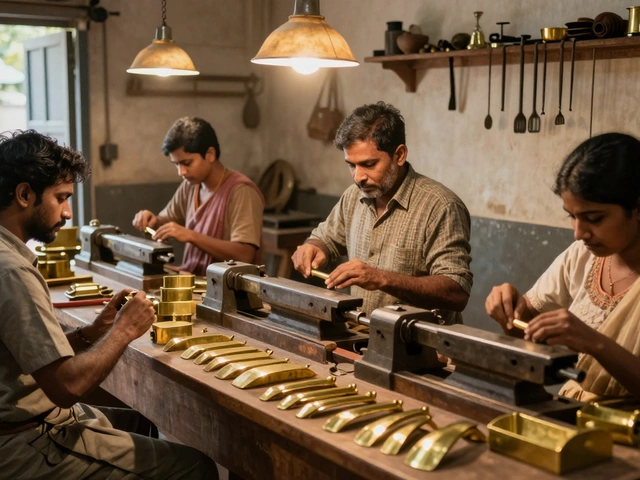2025 Industry Trends: What’s Shaping Manufacturing and Business Today
2025 is already rewriting the rule book for factories, startups, and even hobbyist flippers. From new pharma hubs to the rise of sustainable textile ideas, the changes are fast and concrete. If you’re wondering which shift will affect your bottom line, start by looking at where capacity, demand, and regulation converge.
One clear signal is the geographic reshuffle in pharma. Baddi’s manufacturing plants are scaling up, Hyderabad’s R&D labs are pulling in global talent, and Gujarat continues to dominate exports. Knowing which cluster matches your product line can cut logistics costs and speed up market entry.
Another trend is the growing appeal of low‑competition sectors. Industries such as advanced recycling, niche medical devices, and specialty chemicals are still thinly populated but show strong profit potential. Pairing this insight with a realistic budget – most small‑scale ventures need under INR 15 lakh for a modest start – makes the risk manageable.
Top Manufacturing Shifts to Watch
The classic “5 M’s” – Man, Machine, Material, Method, Measurement – are getting a tech upgrade. Smart sensors now feed real‑time data into AI dashboards, letting factories tweak methods on the fly. This means higher yields without a massive capital hit.
Mass production is also becoming more modular. Smaller, flexible lines can switch from producing kitchen utensils to electronic casings in a single shift. The key is a clear method hierarchy and consistent measurement standards, so quality never slips.
On the product side, items that topped demand lists in early 2025 include eco‑friendly packaging, home‑office ergonomics, and affordable health‑tech gadgets. Brands that sourced these materials locally saved up to 20% on freight, a sweet spot for startups watching cash flow.
Business Opportunities You Can Tap Right Now
If flipping still sounds fun, data shows that high‑ROI categories this year are vintage furniture, limited‑edition sneakers, and niche electronics. The 70% rule – buying at 70% of expected resale value – keeps profit margins healthy, especially when you combine it with quick‑ship options from Indian exporters.
Importing furniture from India to the USA has become smoother thanks to clearer customs codes and digital paperwork. Knowing the exact HS code, arranging container consolidation, and budgeting for a 12‑15% duty can prevent surprise fees.
For those eyeing a manufacturing startup, the step‑by‑step guide in our tag library walks you through licensing, machine selection, and a realistic 12‑month rollout plan. It emphasizes starting with a single product line, mastering the 5 M’s, and then scaling.
Finally, remember the biggest startup mistake: ignoring government schemes. Whether it’s capital subsidy for green tech or tax breaks for export‑oriented units, tapping these incentives can shave years off your breakeven timeline.
Bottom line: 2025 rewards those who blend data‑driven decisions with on‑the‑ground practicality. Scan the articles in this tag for deeper dives, then pick one trend, test a small batch, and watch the numbers speak for themselves.
Furniture Manufacturers India: The Next Big Industry Boom in 2025
The furniture industry in India is set for major growth in 2025, fueled by changing lifestyles and real estate expansion. Consumer demand for smart, sustainable, and stylish furniture is on the rise, and local brands are stepping up in a big way. Government initiatives and technology adoption are making manufacturing faster and smoother. This article breaks down why furniture makers are expected to steal the limelight this year, and what buyers and businesses can expect from the boom.
Read More




